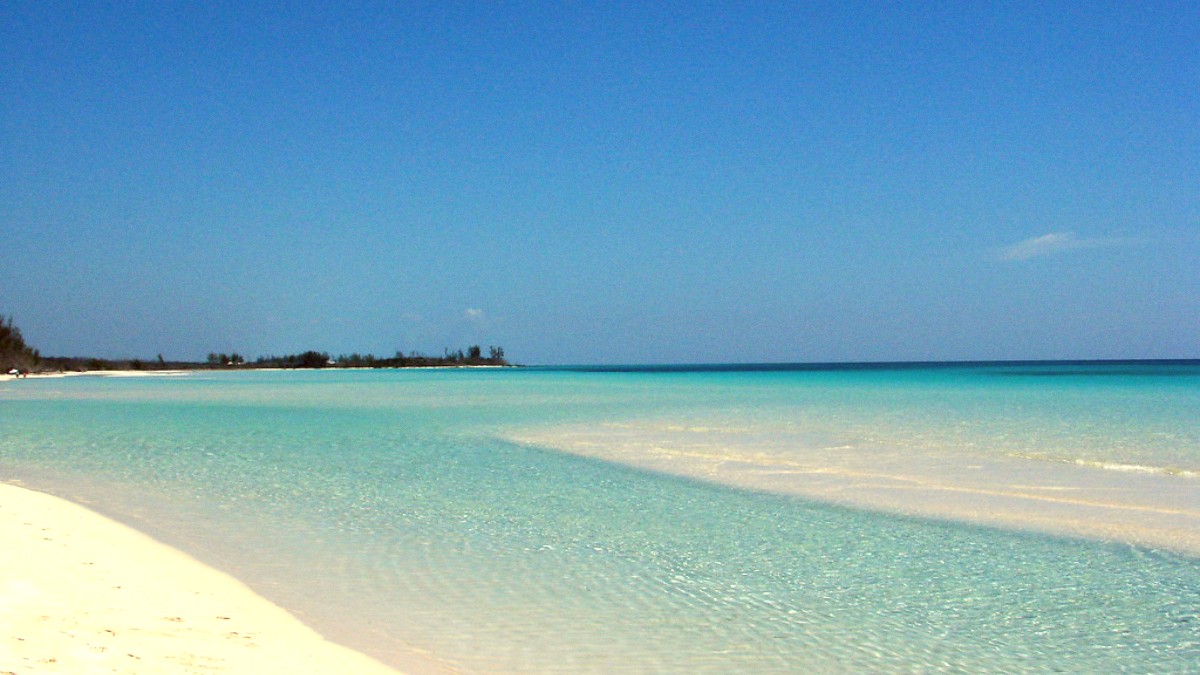
The Bahamas
Grand Bahama maintains fewer formal museums compared to Nassau, the capital. However, smaller venues and cultural performances are present.
Art galleries and exhibition spaces: Some small galleries or local art displays may appear within Port Lucaya Marketplace or resort properties. These showcase local Bahamian artists. The Grand Bahama Artists Association Gallery in Freeport also presents local artwork.
Grand Bahama's landmarks mainly reflect its more recent history and the impact of the tourism industry.
Lucayan National Park for birdwatching. Operators like UNEXSO feature programs to interact with dolphins. Shark encounters, presenting controlled interactions with reef or tiger sharks, are a specific draw for divers.
The extensive underwater cave systems represent unique geological formations. Some of the longest known underwater caves exist here, shaped by freshwater seepage through limestone over millennia.
Ben's Cave and Burial Mound Cave, accessible via boardwalks in Lucayan National Park, are known for stalactites and crystal-clear freshwater. Accessible to certified cave divers only.
Gold Rock Beach provides broad, uncrowded sands. Visit during low tide to see the intricate sand patterns.
UNEXSO allows various dolphin programs, including swims and interactions in a natural lagoon.
Grand Bahama presents surprises beyond the main tourist circuit.
A small, local bakery known for its authentic Bahamian bread and pastries. It presents a taste of local life.
A fantastic, easily accessible snorkeling spot off the main tourist trail. It features a more natural, less commercialized beach experience. Gear rental is available here.
Its presence in port often includes day pass availability for its amenities. This may serve as a hidden gem for those not cruising but wanting a resort-like experience for a day.
While increasingly popular with tourists, it continues as a strong local gathering every Wednesday evening. It features an authentic Bahamian party atmosphere with fresh seafood, music, and dancing.
Showcases local Bahamian art. Less frequented than main tourist sites, it presents insight into the island's creative side.
Continued development, with revived luxury resorts like Old Bahama Bay, renders this quieter side of the island more accessible. It attracts high-end travelers seeking tranquility and direct access to fishing and diving.
The boardwalk through the mangroves at Lucayan National Park leading to Gold Rock Beach features stunning natural backdrops.
The expansive, often empty, beaches of the East End present peaceful, scenic shots for photography and quiet enjoyment.
The Freeport Produce Exchange offers a glimpse into local commerce and fresh produce displays, great for capturing daily island life.
Utilize reputable platforms for booking and exploring Grand Bahama's attractions.
Grand Bahama blends a modern tourist infrastructure with areas of untouched natural beauty and glimpses into local life.
From the lively Port Lucaya Marketplace to the tranquil East End beaches and historical West End, the island presents diverse experiences for every traveler.
The island features both developed tourist hubs and significant natural parks.
While not focused on ancient history, the island's more recent past and local culture provide points of interest.
The island's geological formations and diverse ecosystems offer unique natural experiences.
Beyond the main tourist spots, smaller local attractions and experiences await discovery.
Organize your sightseeing based on the island's distinct areas to maximize your experience.
Dedicate a day to explore Lucayan National Park and Gold Rock Beach for natural beauty and tranquility.
Spend evenings at Port Lucaya Marketplace for dining, shopping, and live music, immersing in the island's nightlife.
Visit Freeport for local commerce, markets, and a glimpse into daily Bahamian urban life, including the Artists Association Gallery.
For various tours and activities, consider using these platforms to simplify your planning and booking.
GetYourGuide - Grand Bahama ToursCheck local tourism websites for official guides and events happening during your visit.
Bahamas.com - Grand BahamaLook for local community calendars or ask hotel staff for temporary exhibits, cultural performances, or festivals.
A good map or navigation app is helpful for exploring the West and East Ends independently.
Google Maps - Grand BahamaFamiliarize yourself with jitney routes and taxi services for convenient travel.
For outdoor activities, consider certified operators for safety and expertise.
Connecting with local traditions enriches your visit.
While Grand Bahama offers a range of activities, always prioritize safety, especially for water sports and exploration of remote areas.
For certified cave diving, ensure you have the proper training and equipment. Confirm tour operator credentials.
Secure your stay in advance, especially during peak seasons, to obtain the best choices and rates.
Embrace Bahamian flavors and plan for dietary needs to fully appreciate the local cuisine.
Maximize your exploration by understanding transportation and areas.
This planning ensures you access all desired areas efficiently.
Interact with local customs and events for a richer experience.
These interactions deepen your connection to the island's spirit.
Plan for rest and rejuvenation alongside your adventures.
A balanced trip includes both exploration and downtime.
Grand Bahama is generally safe, but common travel precautions apply. Be aware of your surroundings, especially at night in less-trafficked areas.
The Bahamian dollar is pegged to the US dollar (1:1). US dollars are widely accepted. Credit cards are common in tourist areas, but cash is useful for local vendors.
The Bahamas has a tropical climate. Hurricane season runs from June to November; consider travel insurance during these months.